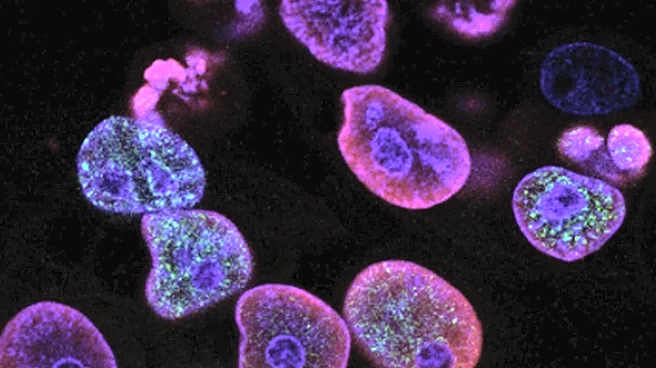What's Happening?
Researchers from La Trobe University, the Walter and Eliza Hall Institute of Medical Research, and Toronto Metropolitan University have uncovered a novel mechanism by which viruses, such as the flu, may spread within the body. The study reveals that when
cells undergo programmed death, they leave behind a 'footprint of death' that can be exploited by viruses to propagate. This footprint consists of extracellular vesicles (EVs) known as 'F-ApoEVs,' which are released by dying cells. These vesicles serve as markers for the immune system to clean up cell debris, but viruses can hijack this process, using the vesicles as a 'Trojan Horse' to spread to neighboring cells. The findings suggest that the process of cell death is more structured than previously thought, involving step-wise changes that allow cells to 'communicate from the grave.'
Why It's Important?
This discovery has significant implications for understanding viral infections and developing new therapeutic strategies. By revealing how viruses can exploit the cell death process, the research highlights potential targets for drug development aimed at preventing viral spread. The study underscores the importance of cell-to-cell communication in maintaining health and how its manipulation by viruses can lead to disease. This knowledge could lead to advancements in treating a range of conditions where cell death plays a role, including infectious diseases, autoimmunity, cardiovascular disease, and cancer. The research emphasizes the value of basic biological research in uncovering mechanisms that could inform the treatment of various diseases.
What's Next?
The researchers plan to validate their findings through experiments using mouse models and patient samples. These steps are crucial to confirm the translational potential of their discoveries and to explore the development of drugs that can modulate the cell dismantling process. The ongoing research aims to deepen the understanding of cell death and its implications for disease treatment, potentially leading to new therapeutic approaches that could mitigate the spread of viral infections and other diseases linked to cell death.













